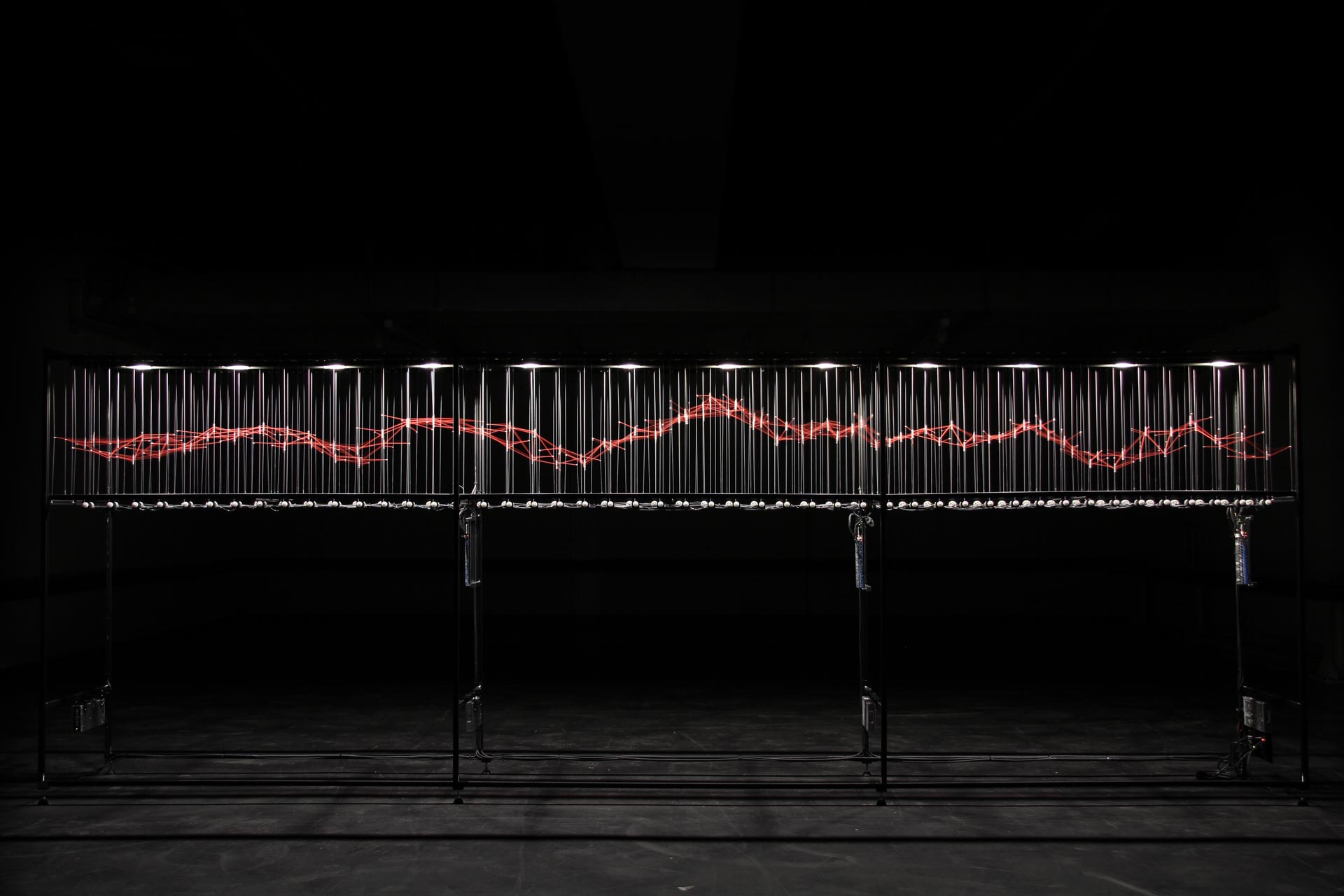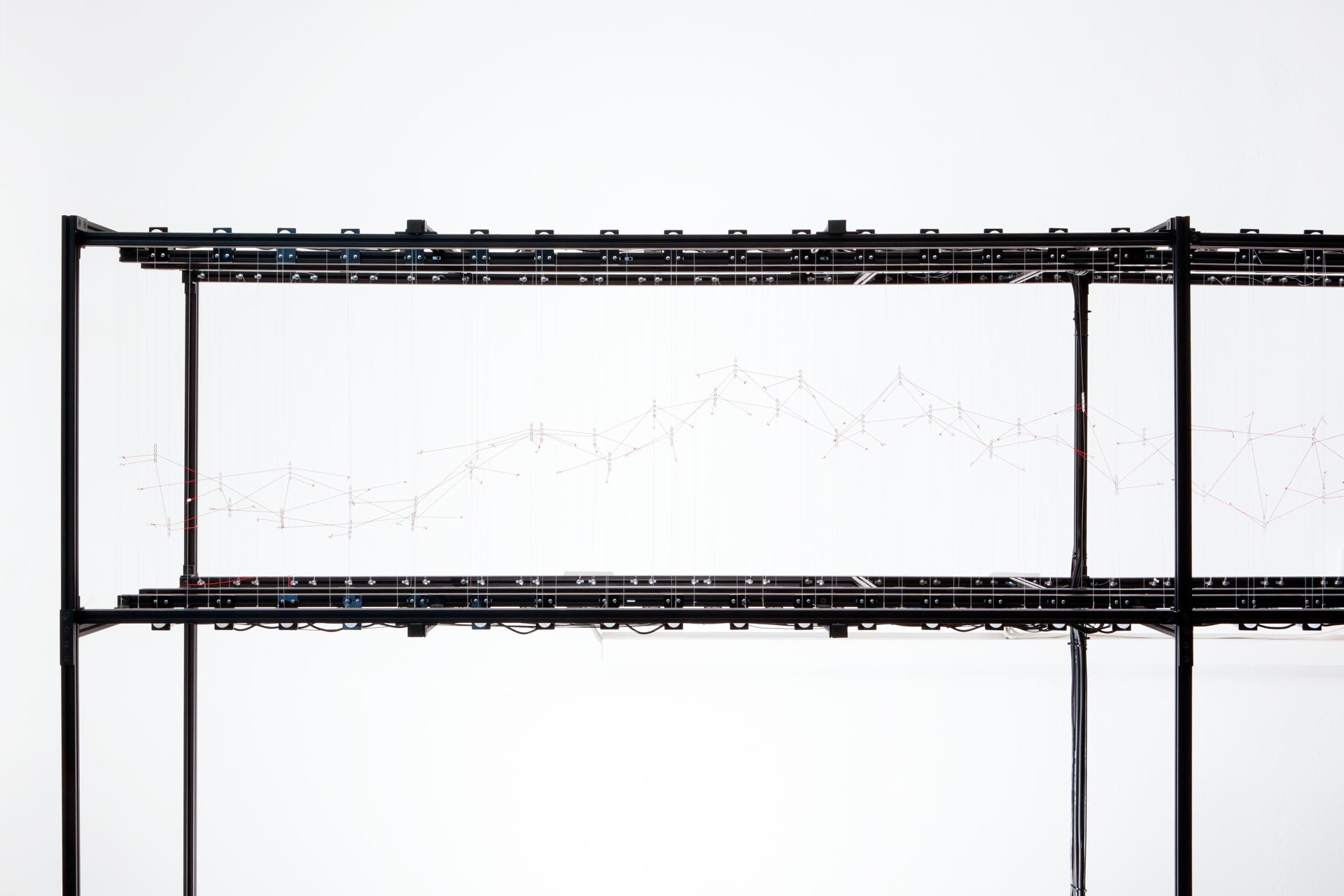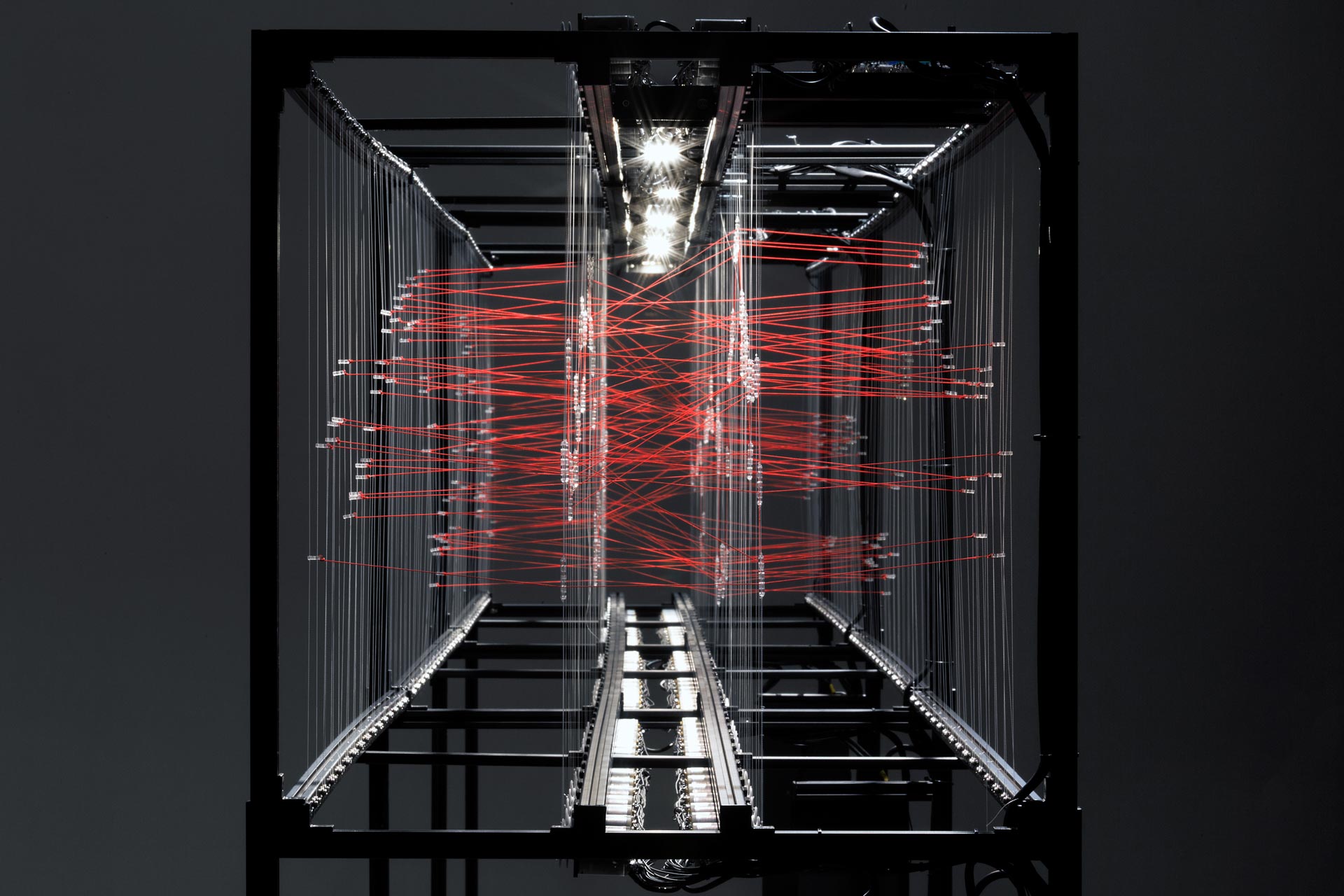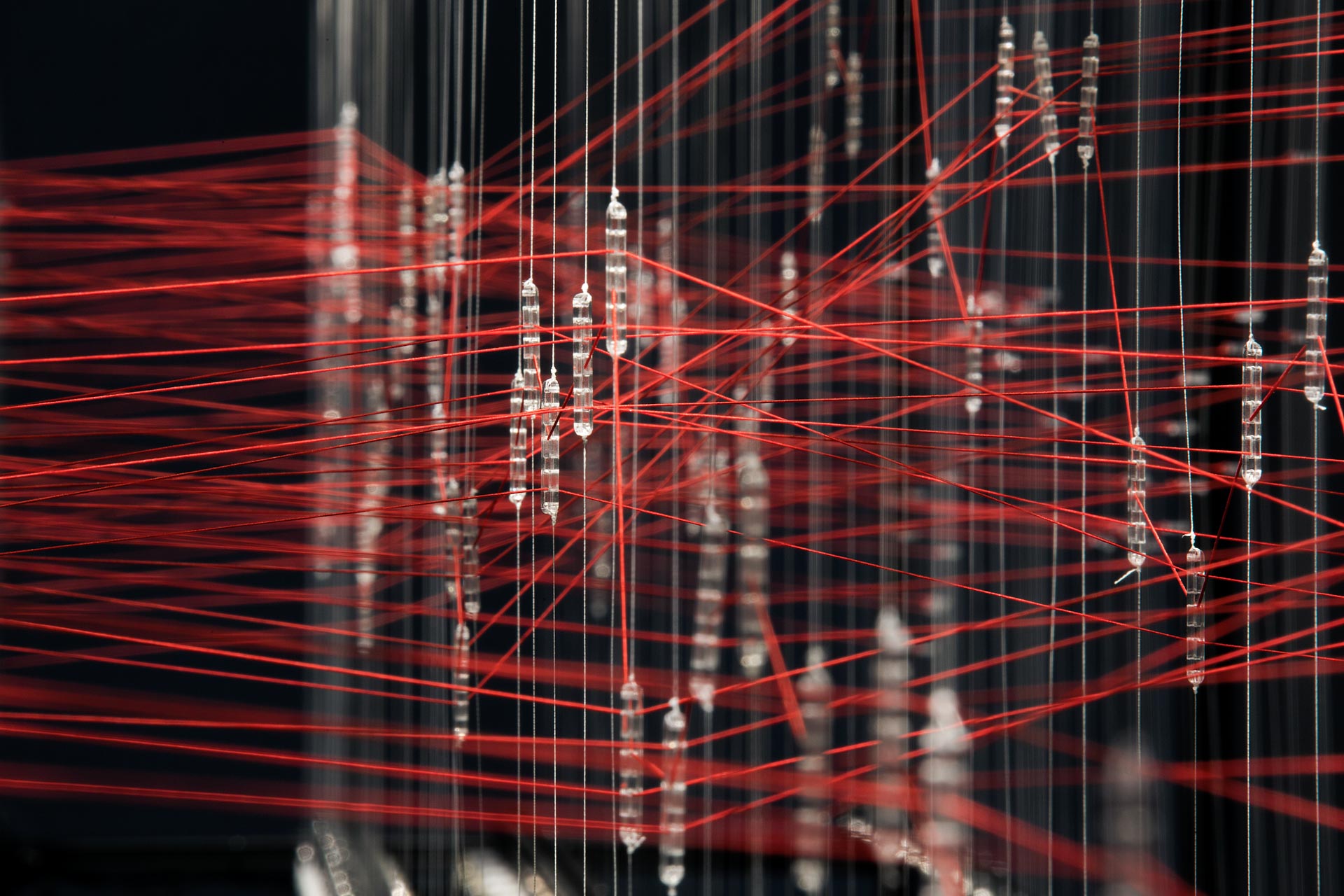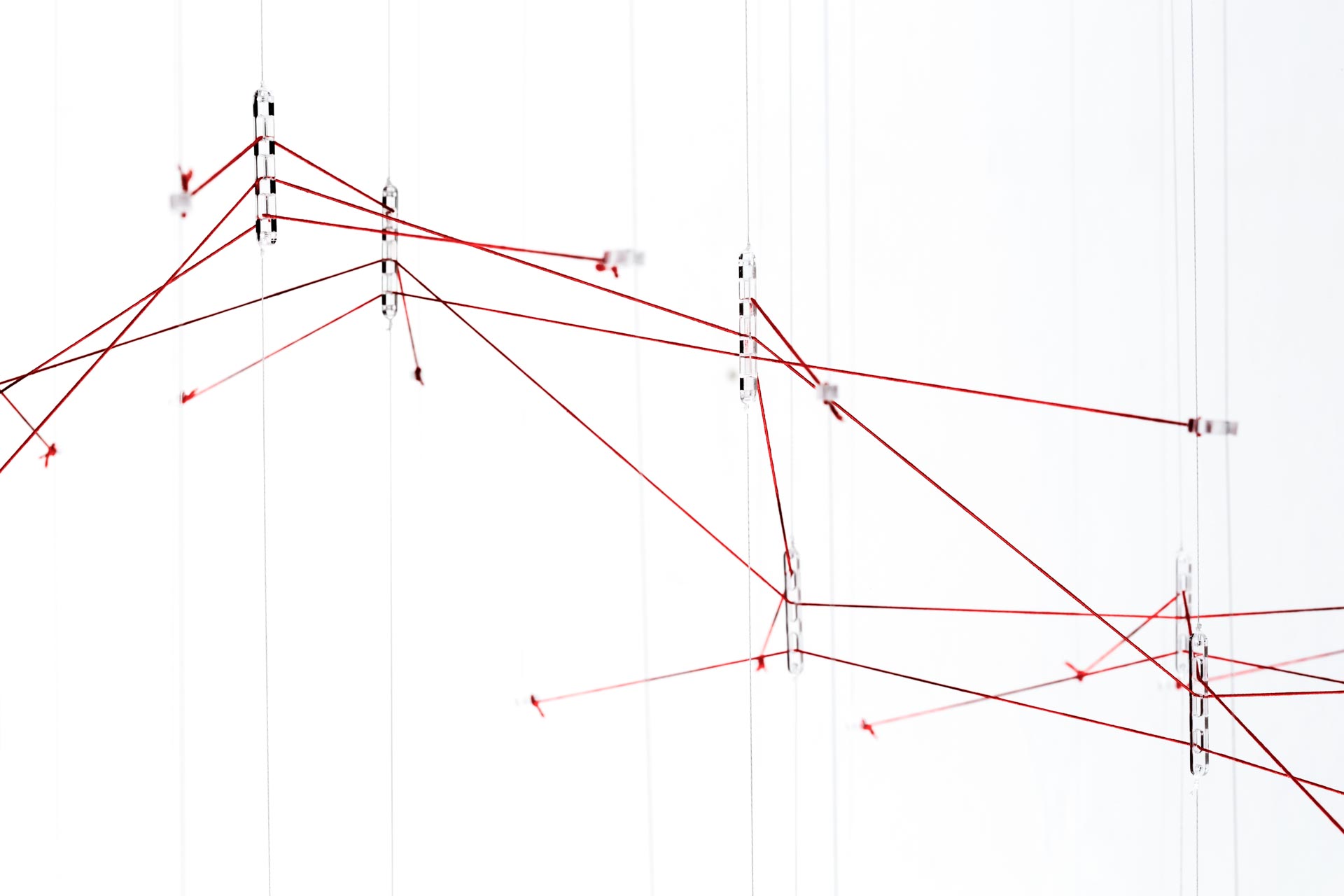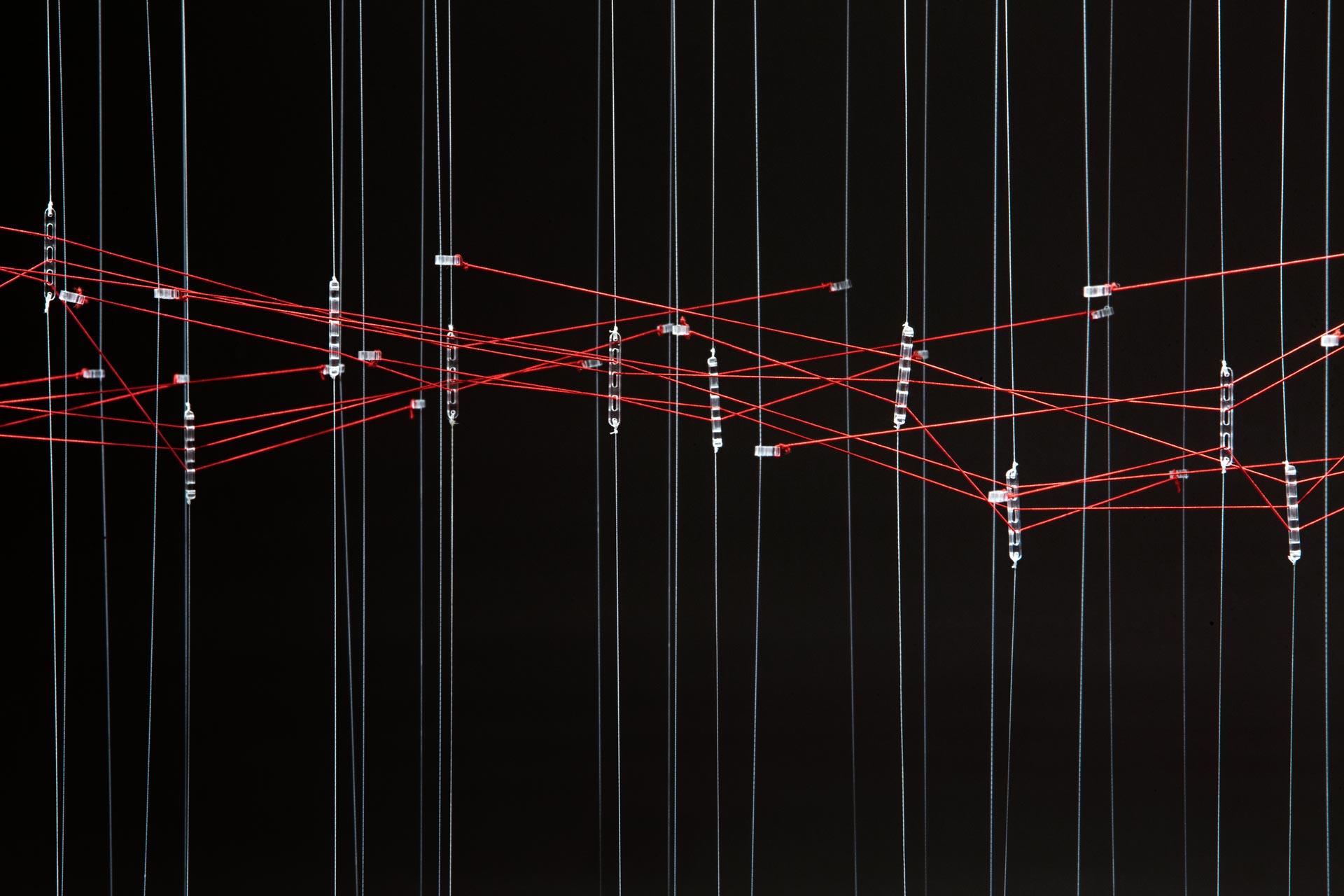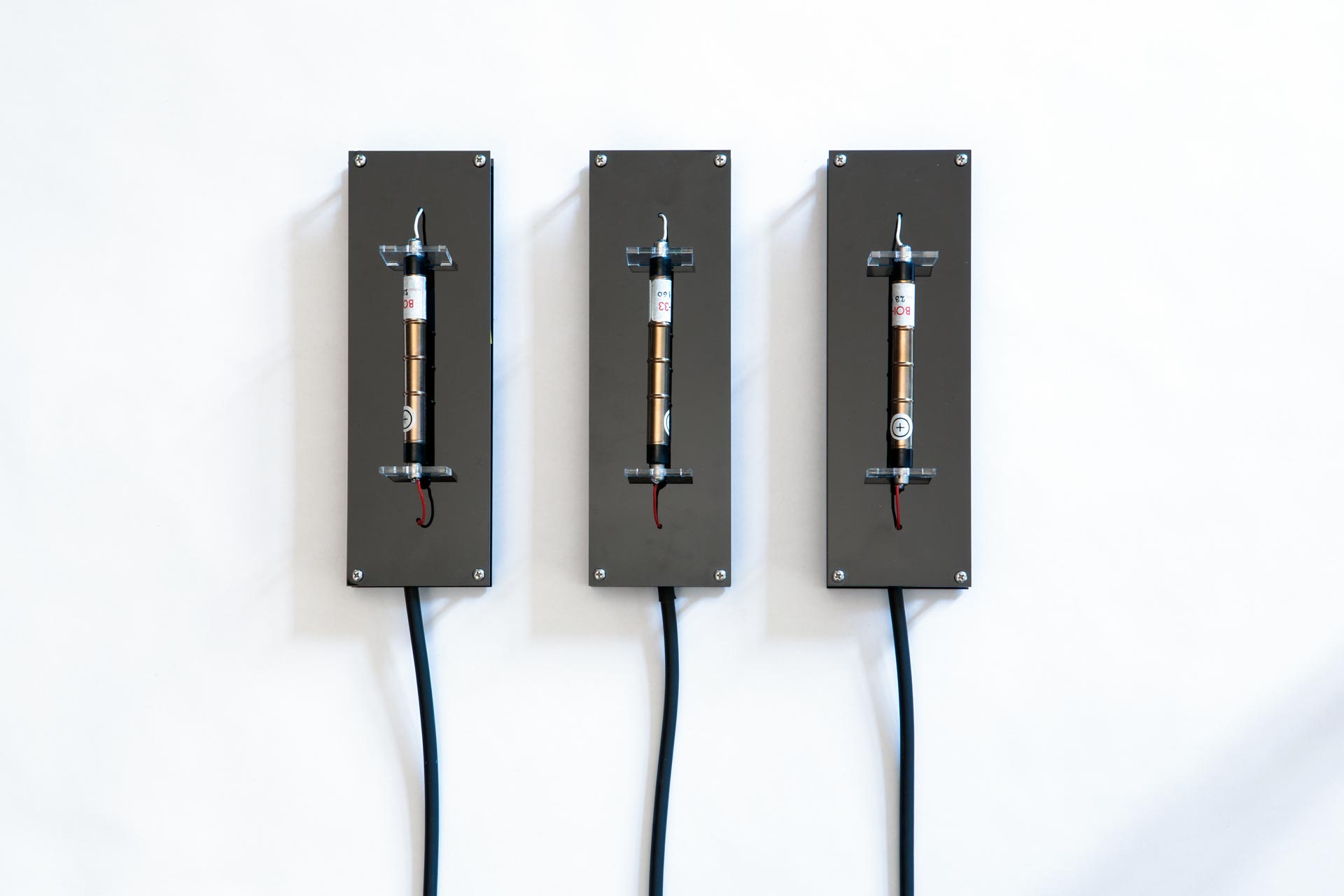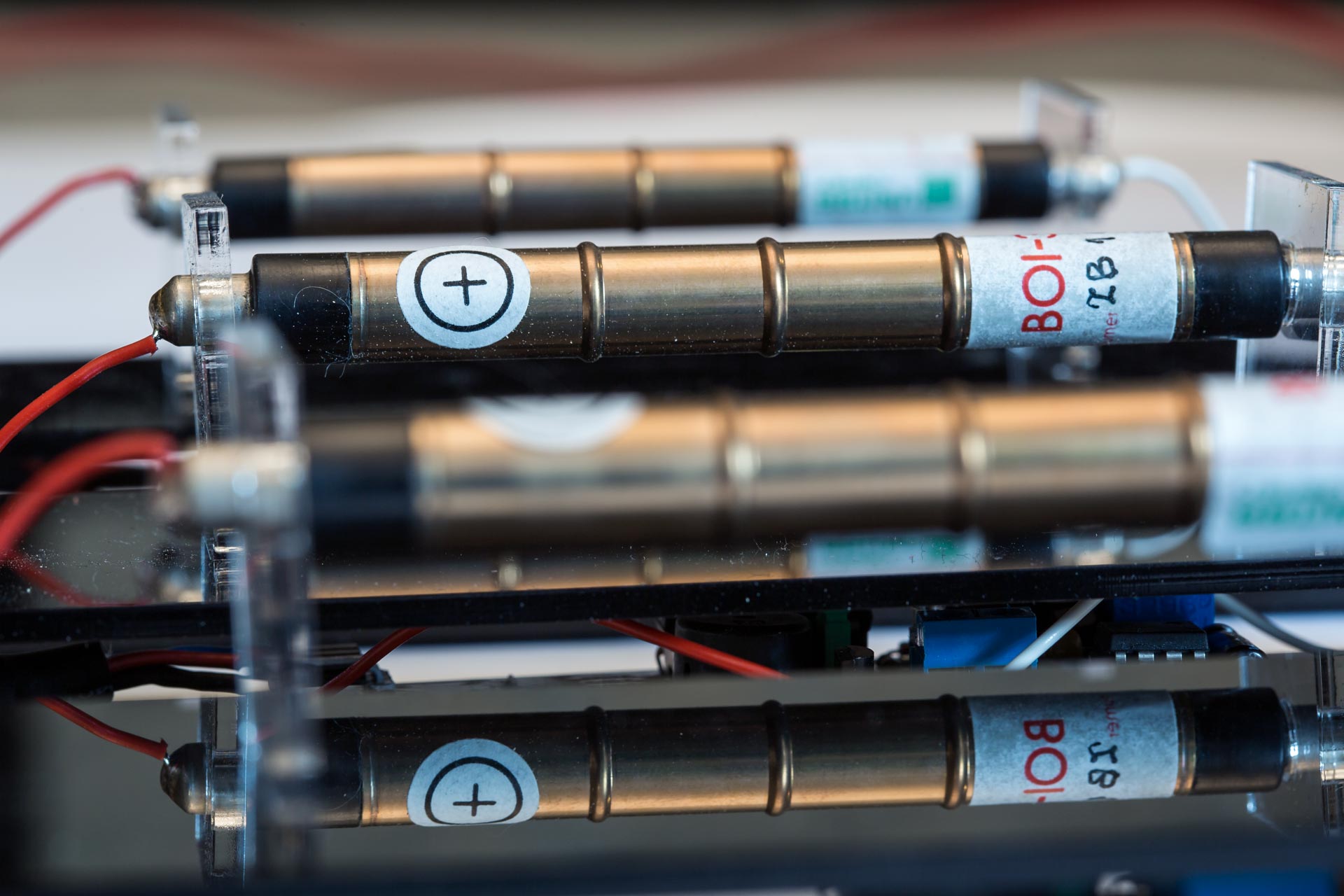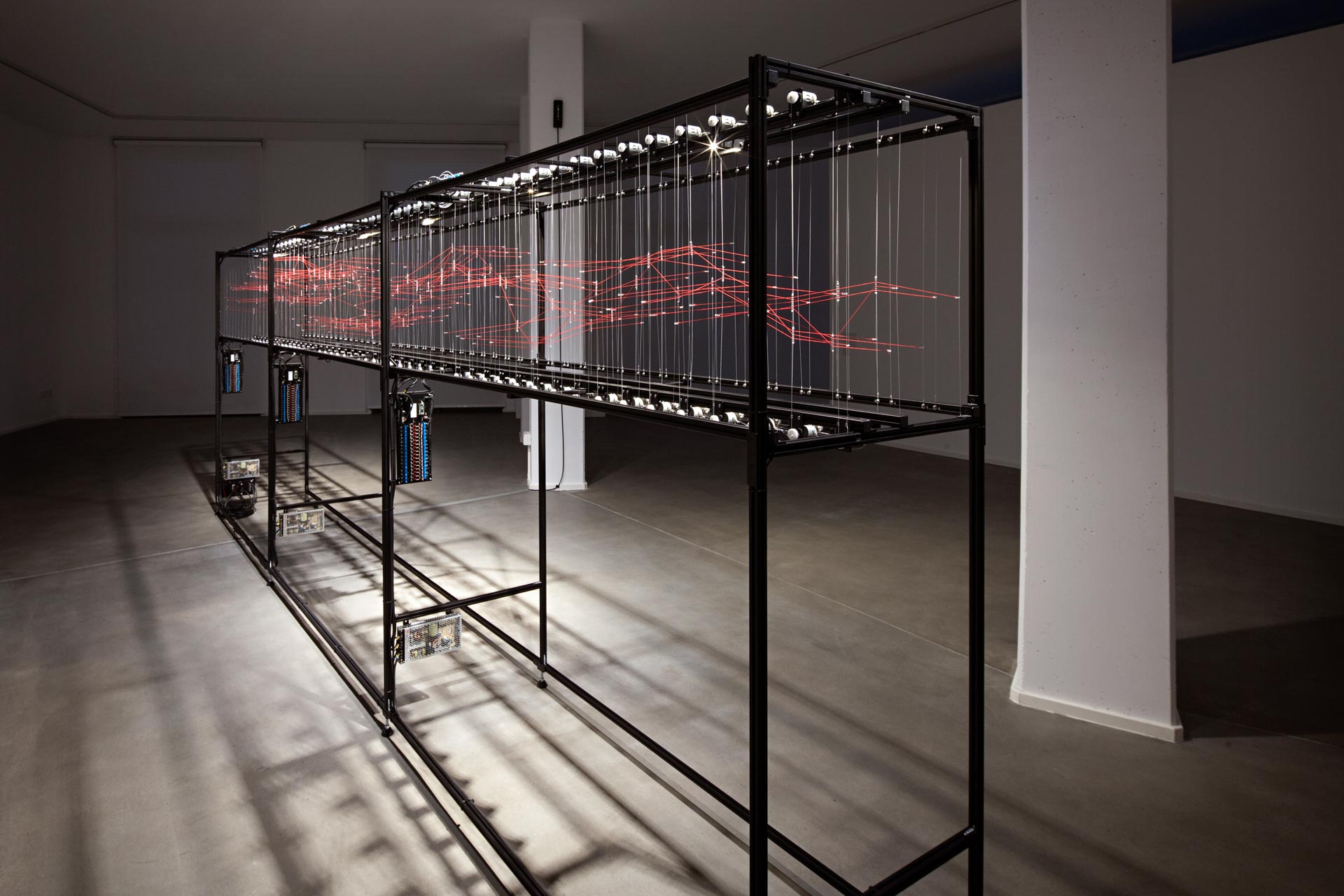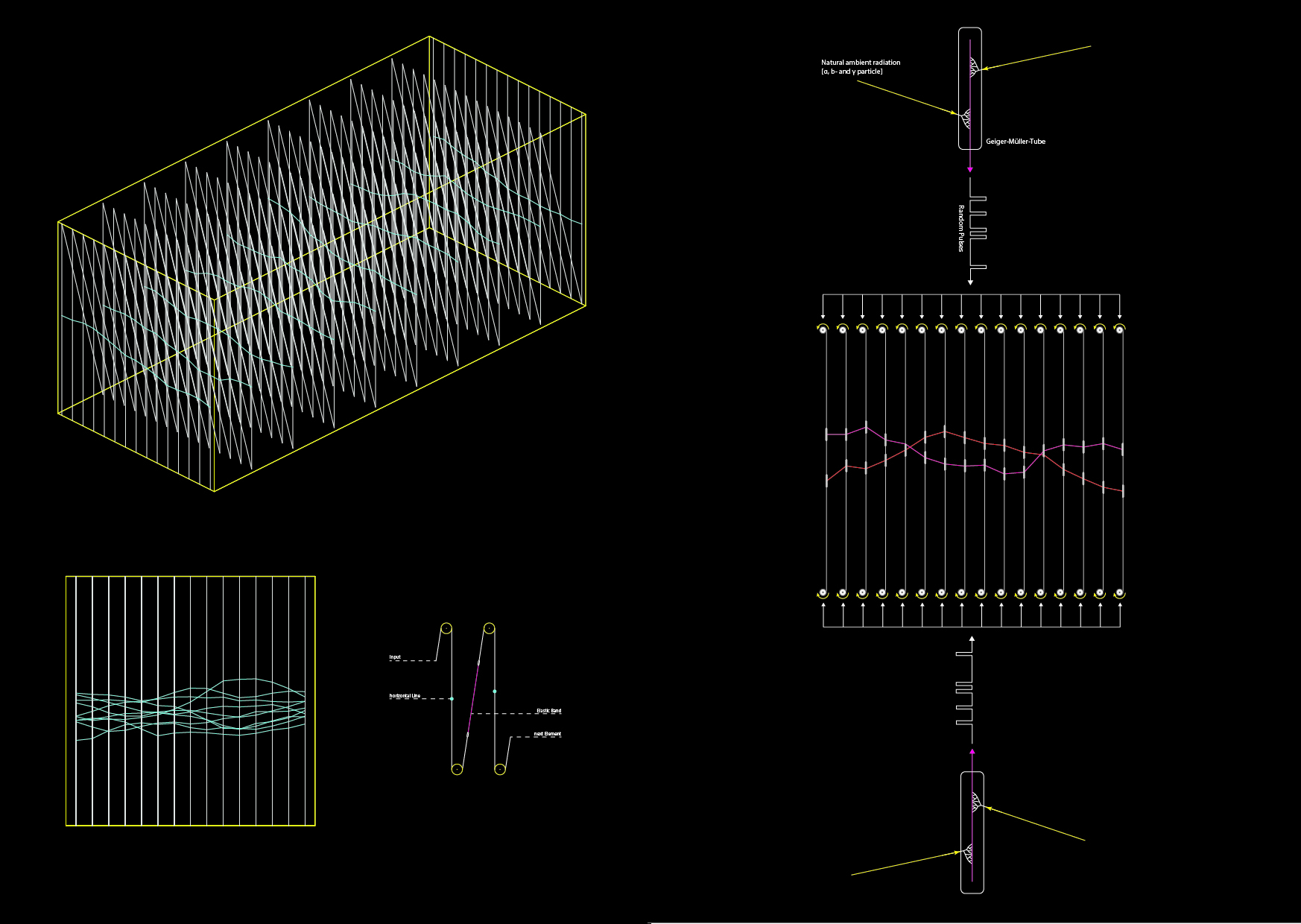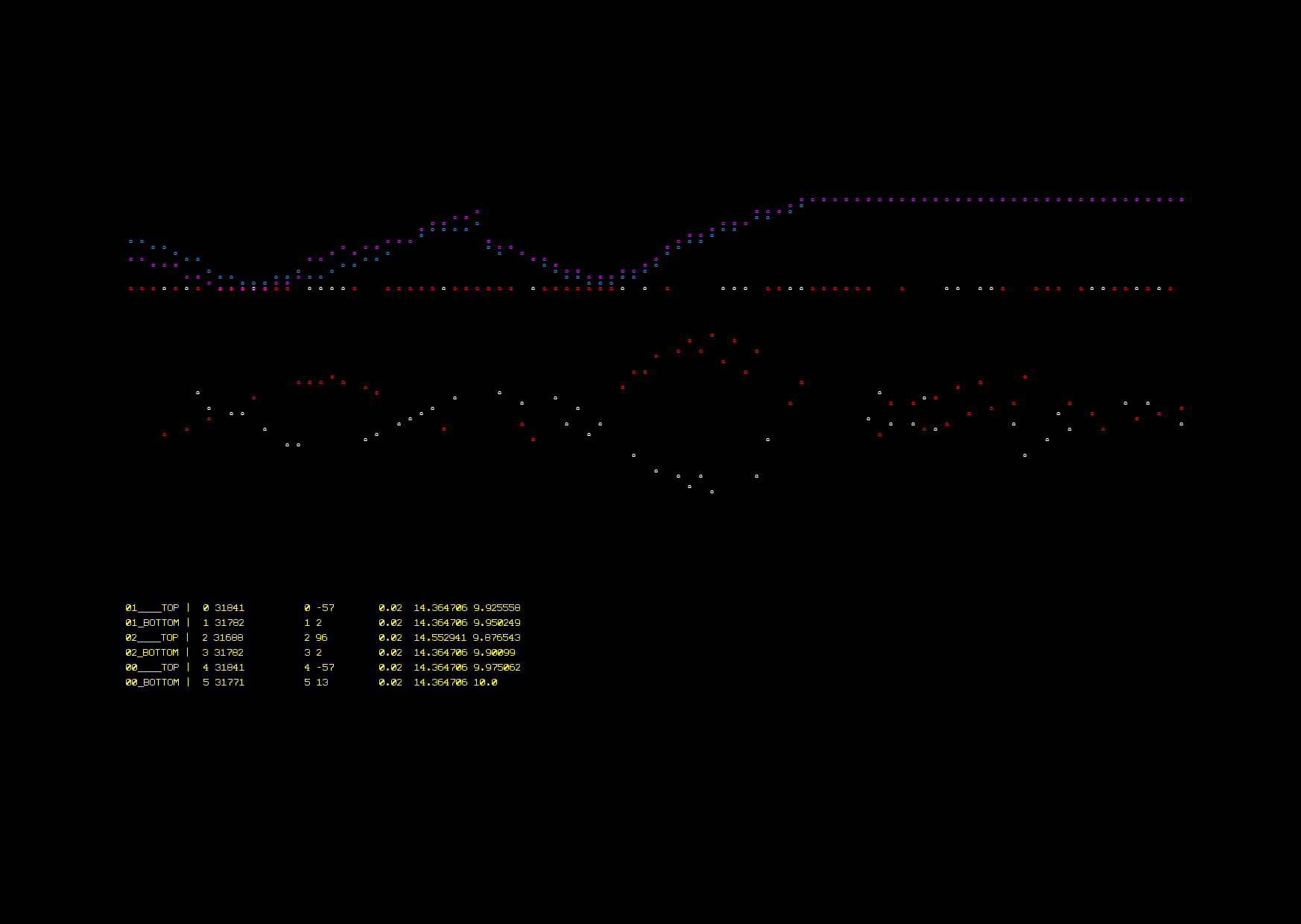Interface I investigates the boundary between two interacting systems. Each system is a compound of motors, strings, and elastic bands arranged horizontally. The two units face each other vertically (one on the top, one on the bottom). Each motor on each level (top, bottom) is connected by a string to its opposite, which meet in the center. Both motors pull their string in the opposite direction (like in a tug of war). At the point where the strings meet, a mesh of elastic bands connects each string to its neighbors. The mesh couples each element to its surrounding elements in order to achieve a local emergent behavior.
In order to excite (stimulate) the system’s behavior, each motor is fed with random impulses of different pulling strengths. Random signals are taken from a number of Geiger-Müller tubes, which are used as an entropy source. The Geiger-Müller tubes pick up the natural ambient radiation of the earth. This noise acts as a catalyst that enables the systems to change.
As the process begins, the systems start to negotiate an interface/boundary surface [Grenzfläche] between two separate organizations. The behavior of this system is not programmed or choreographed: the shapes and behavior develop out of the interactions of many individual elements. Depending on the force distribution of the opposing motors, units move either upward or downward. At the same time the overall forces of the neighboring elements influence this movement and vice versa.
Interface I investigates complex interactions of entities in a kind of encapsulated model space. Complex and emergent behaviors appear at different scales and in different realms, ranging from biology, social science, to economics. By removing all real-world references, Interface I allows for manifold interpretations. The installation takes a closer look at the construction of digital images. Here, the focus is on the relationship between the almost infinite fast signals/switching operations in the materials of the machine and the coherent and orderly looking images on the outside. Interface I removes the distinction between process and display (output) by making the display (the mesh of rubber bands) the crucial part that defines the outcome of the process (behavior).
and Ars Electronics 2016, Linz
Materials:
Aluminum tubes, DC motors, strings, elastic bands, custom electronics, Geiger-Müller tubes
Credits:
Represented by NOME Gallery.
Produced by NOME Gallery(4,80 meter version) and the Graduate School of the University of the Arts, Berlin (3,20 meter version) with support of the Einstein Foundation.
Photographies by Bresadola+Freese drama-berlin.de
Awards:
Grand Prize from the Japan Media Arts Festival in 2017, Tokyo JP
Exhibitions/Performances:
Future Tense: Art, Complexity, and Predictability
2024-08-24 – 2024-12-14
Beall Center for Art + Technology, Irvine US
Floating Codes (solo)
2020-10-16 – 2021-01-09
gnration, Braga PT
Todays Art 2019
2019-09-19 – 2019-09-22
TodaysArt, Den Hague NL
Experientia!
2019-06-23 – 2019-10-21
Château de Lunéville, Luneville FR
Computing Spaces (solo)
2019-02-01 [more]
Stereolux, Nantes FR
Device_art 6.018: Machines Are Not Alone
2018-12-18 – 2019-02-03
The Museum of Contemporary Art Zagreb / KONTEJNER | bureau of contemporary art, Zagreb HR
Singularity Now
2018-05-24 – 2018-05-27
Athens Digital Arts Festival, Athen GR
unREAL. The Algorithmic Present
2017-11-11 – 2018-01-21
Chronus Art Center, Shanghai CN
Japan Media Arts Festival 2017
2017-09-16
NTT Inter Communication Center [ICC], Tokyo Opera City Art Gallery, Tokio JP
Interface I – Ljubljana (solo)
2017-04-22 – 2017-04-16
Kresija Gallery, Ljubljana SLO
Interferences
2016-11-03 – 2016-11-05
KIKK Festival 2016, Namur BE
No New Kind of Duck – Graduale 16
2016-10-20 – 2016-10-23
Kunstverein am Rosa-Luxemburg-Platz, Berlin DE
Alchemists of our Time
2016-09-08 – 2016-09-12
Ars Electronica 2016, Linz AT
The Paradox of Knowing Universals (solo)
2016-05-13 – 2016-07-03
Kasseler Kunstverein, Kassel DE
Order + Noise. Interface I (solo)
2016-04-23 – 2016-06-18
NOME Gallery, Berlin DE
